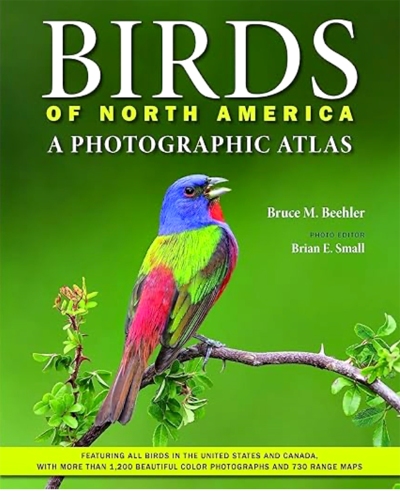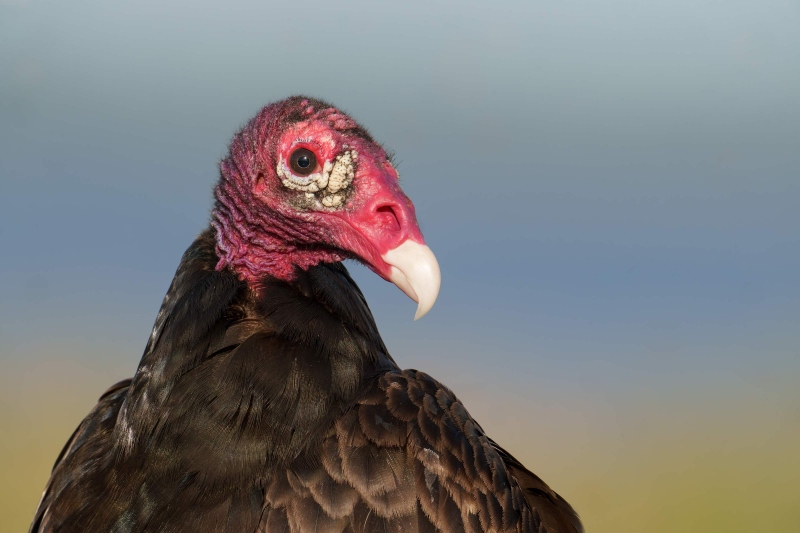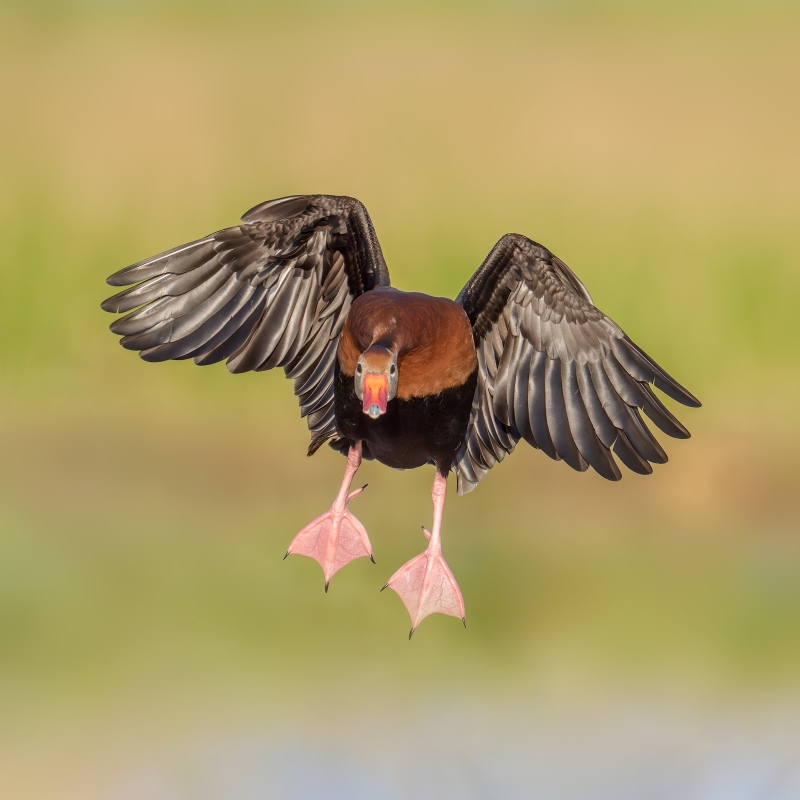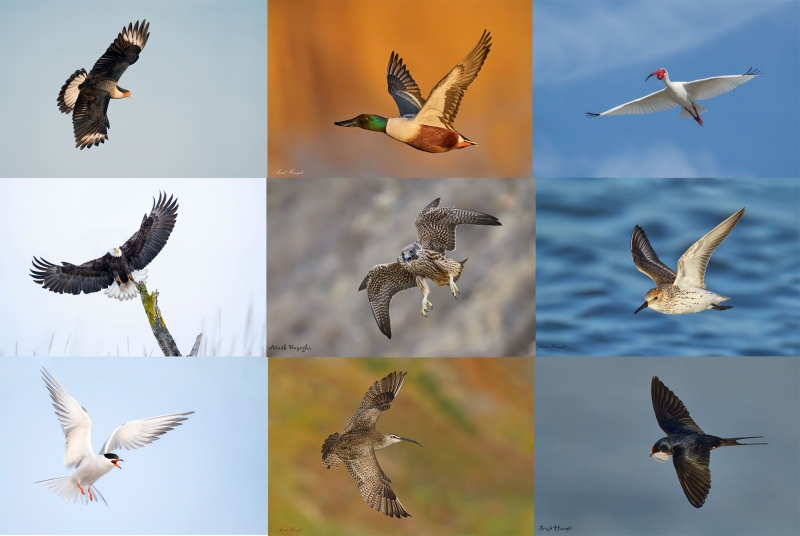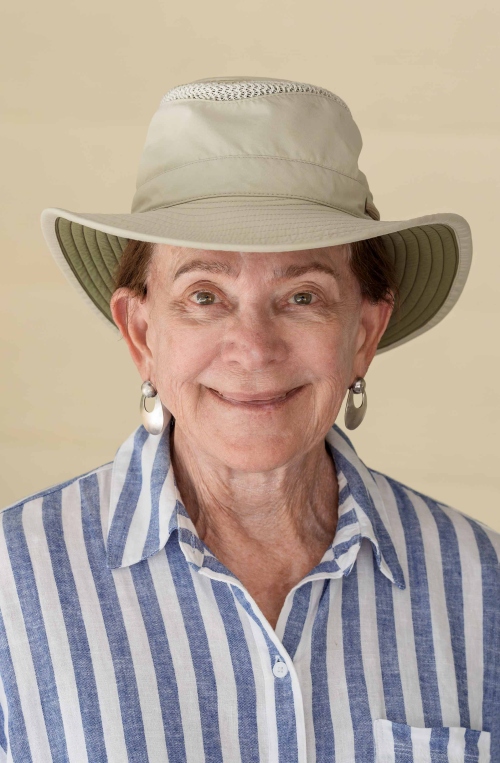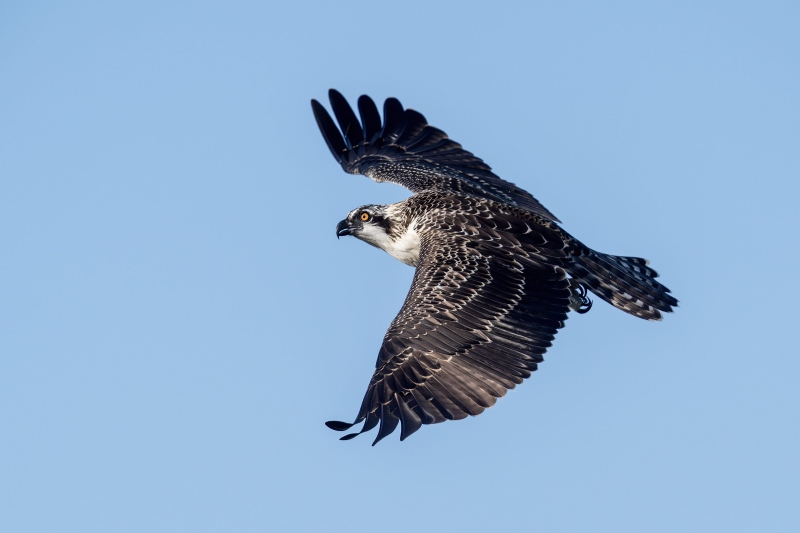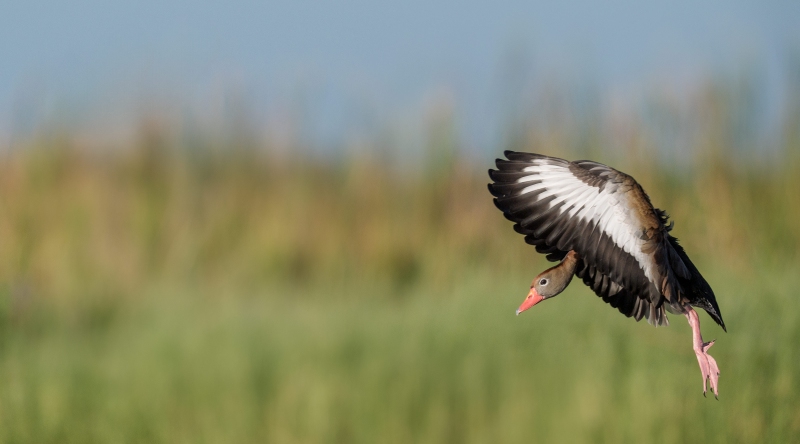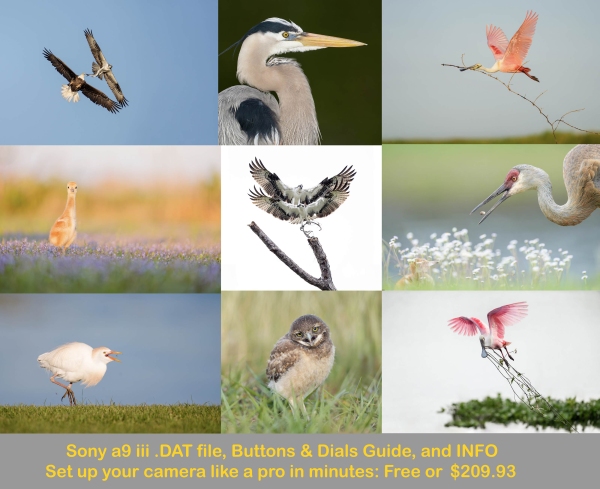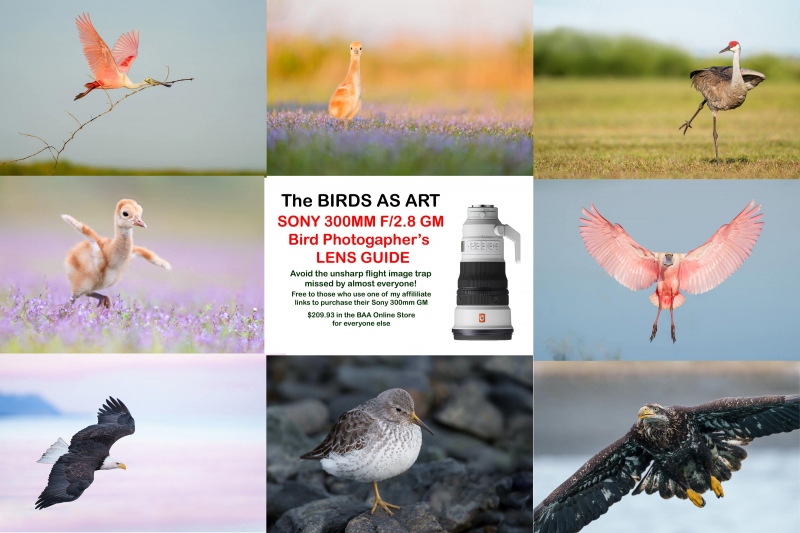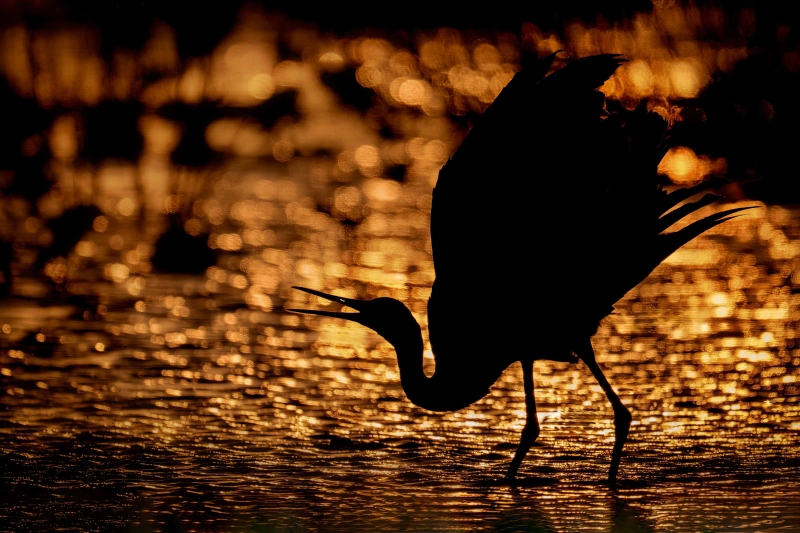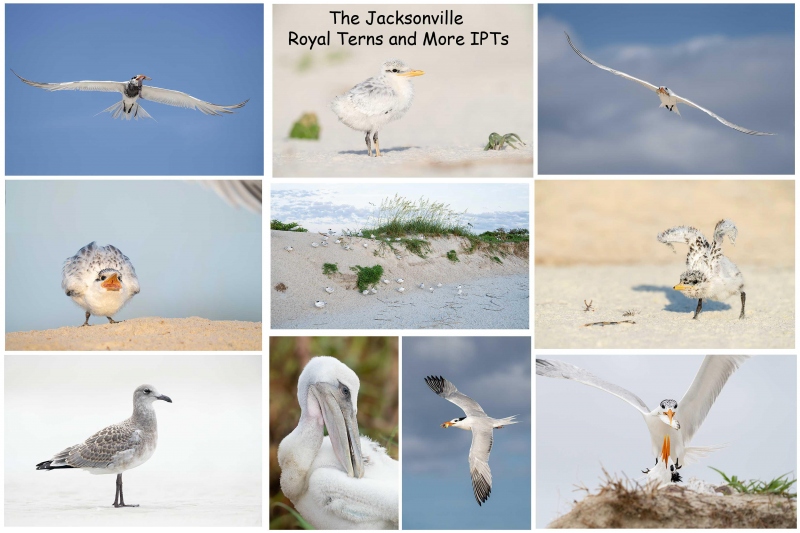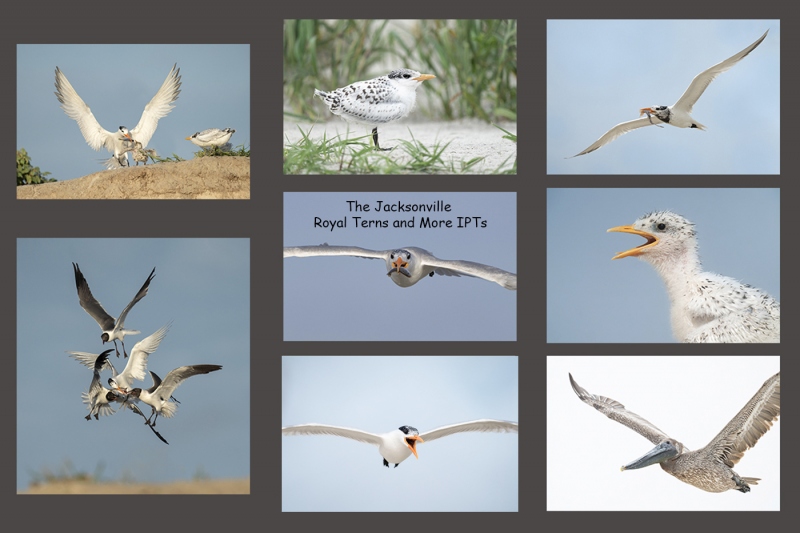Important Notice
After an update on 4 May, WordPress stopped sending post notifications. We are aware of the issue and are working on rectifying it. You can always visit the blog by visiting or bookmarking www.BIRDSASART-Blog.com.
Supporting My Efforts Here
If you enjoy and learn from the blog, please consider using one of my affiliate links when purchasing new gear. It will never cost you a single penny. To support my effort here, please order from B&H by beginning your search here. Or, click here, to order from Bedfords and enter the discount code BIRDSASART at checkout to receive 3% cash back to your credit card and enjoy free Second-Day Air Fed-Ex shipping. It is always best to write for advice via e-mail.
In many cases, I can help you save some serious dollars. And/or prevent you from purchasing the wrong gear.
What’s Up?
As the northeast winds of the past two weeks have swung around to the southwest, the quality of the bird photography at ILE has dropped to next to nothing.
I continue working on revising the Sony a9 iii Info Sheet and should be e-mailing it to the group no later than Sunday afternoon.
Today is Saturday 8 June. I went down to the lake early. Conditions were not bad, but I pretty much struck out. Sitting on my milk crate, I practiced acquiring focus on small birds at 1200mm. For the most part, there was a gentle breeze from the southeast, not nearly as bad as was predicted. I did have one very good chance with an Osprey carrying a Bluegill and flying right at me right down sun angle.
Whatever you are doing, I hope that you too choose to have a wonderful day.
If you plan on purchasing a Sony a9 III Mirrorless Camera (or anything else for that matter), please remember to use or write for either my Bedfords discount code or my B&H affiliate link. Folks who use one of my two affiliate links to purchase the a9 III will receive my .DAT settings (the complete camera set-up) along with a Buttons and Dials Guide.
Please remember to use the B&H links that are found on most blog pages and to use the BIRDSASART discount code at checkout when purchasing your new gear from Bedfords to get 3% back on your credit card and enjoy free second-day air FedEx. Please, also, consider joining a BAA IPT. You will be amazed at how much you will learn!
If an item — a Delkin flash card, or a tripod head — for example, that is available from B&H and/or Bedfords, is also available in the BAA Online Store, it would be great, and greatly appreciated, if you would opt to purchase from us. We will match any price. Please remember also to use my B&H affiliate links or to earn 3% cash back at Bedfords by using the BIRDSASART discount code at checkout for your major gear purchases. Doing either often earns you free guides and/or discounts. And always earns my great appreciation.
|
|
Birds of North America: A Photographic Atlas |
Birds of North America: A Photographic Atlas
A gorgeous up-to-date photographic collection of all 1,144 bird species in North America (including Hawaii!).
A Great Blue Heron, a Wood Duck, a Baltimore Oriole, an Eastern Bluebird, or a Belted Kingfisher—which North American bird species is your favorite? In Birds of North America: A Photographic Atlas, Bruce M. Beehler provides the information and images you need to identify and enjoy each of the 1,144 amazing and diverse bird species recorded in the United States and Canada, including Hawaii and Alaska. Featuring more than 1,200 full-color photographs and illustrations and more than 700 range maps, this comprehensive reference provides both beginners and seasoned birders with important facts about each bird’s ecology, behavior, seasonal movements, nesting biology, and conservation status.
Birds of North America gives bird-lovers everything they could ask for: The photographs and illustrations, selected and curated by Brian E. Small, one of America’s most talented nature photographers, depict each species in its most beautiful plumage and natural habitat. The largest, most detailed, and most up-to-date range maps available anywhere provide invaluable insider information on the best birding hotspots. And the special sections rounding out the book offer helpful guidance on birding gear, field trip planning, critical resources, and conservation issues. This is the book for aspiring and veteran bird enthusiasts alike.
You can save more than $15.00 by purchasing your copy here.
|
|
|
This image was created on 1 June down by the lake near my home at Indian Lake Estates, FL. Working from the driver’s seat of my SUV, I used the BLUBB-supported Sony FE 600mm f/4 GM OSS lens, the Sony FE 2.0x Teleconverter, and The One, the Sony Alpha 1 Mirrorless Digital Camera). The exposure was determined via Zebra technology with ISO on the thumb dial. ISO 640. 1/250 sec. at f/16 (stopped down 5 stops!) in Manual mode. When evaluated in RawDigger, the raw file exposure was determined to be perfect. AWB at 8:21:39am on variably cloudy morning. Tracking: Expand Spot/AF-C performed perfectly at 1200mm. Be sure to click on the image to enjoy a high-res version. Image #1: Head portrait — adult Turkey vulture |
A Precarious Perch for Perspective
My vehicle was on an angle halfway up the steep hill just south of the rest room building by the pier. I made a few images with a sky background but I wanted a bit of grass and a bit of lake so I backed down the hill, repositioned my vehicle so that I would stay on sun angle, raised the window with the BLUBB- on it, folded the right edge of the big beanbag in a bit to gain another inch of height, and very slowly, drove a bit higher up the hill to get the background I wanted. I made one image and the vulture took flight.
I Have Not Forsaken the Sony a1
I still use the a1 most of the time when photographing static subjects. It is hard to beat 51 million pixels with 24 million pixels.
Why f/16?
Being close to the bird I wanted to stop down to ensure enough d-o-f to cover the entire head and breast. I may have overdid it a bit by stopping down five full stops from f/4 to f/16, but the image is surely sharp; 1/250 second was more than fast enough to create a very sharp image.
Depth of Field Question
Why is the background in this image so soft, smooth, and defocused at f/16?
|
|
|
This image was created on 4 June 2024 down by the lake near my home at Indian Lake Estates, FL. Standing at full height, I used the Robus RC-5558 Vantage Series 3 Carbon Fiber Tripod/Levered-Clamp FlexShooter Pro-mounted Sony FE 600mm f/4 GM OSS lens, the Sony FE 2.0x Teleconverter, and the ridiculously amazing Sony a9 III Mirrorless Camera. The exposure was determined via Zebra technology with ISO on the Thumb Dial. ISO 3200. 1/4000 sec. at f/8 (wide open) in Manual mode. When evaluated in RawDigger, the raw file exposure was determined to be perfect. AWB at 7:45:09am on a sunny morning. Zone/AF-C with Bird Face-eye AF enabled performed perfectly even at 1200mm. Be sure to click on the image to enjoy a high-res version. Image #2: Incoming Black-bellied Whistling Duck braking to land |
1200mm Flight Shooting with the Sony a9 iii
What can I say other than “I need to do lots more flight photography at 1200mm with the a9 iii”? The speed of initial focusing acquisition and AF accuracy continues to amaze me.
With the butt ugly marsh grasses transformed into a sweet green blur, the compression at 1200mm is to die for.
Huge News!
Arash Hazeghi, perhaps the most skilled and productive handheld avian flight photographer in the world, finally decided to try flight photography on a tripod with the Levered-Clamp FlexShooter Pro. He texted me this yesterday: The FlexShooter head is very good. I can use it with the 600mm f/4 with either TC! And I can also use it to shoot videos.
|
|
|
Click on the composite to view a larger version and be even more impressed. The Art & Science of Photographing Birds in Flight with the Sony α-1
|
The Art & Science of Photographing Birds in Flight with the Sony α-1
by Arash Hazeghi and Arthur Morris
First of all, if you use Nikon or Canon (or Olympus or Fuji) gear, or a Sony a9 iii, do not be put off by the title. While a portion of the guide deals specifically with the Sony α-1, there is a ton of priceless information, tips, and techniques that can help you become a better flight photographer. No matter what system you are using. If you don not use an α-1, be sure to read down to the bottom to save a few bucks.
Arash Hazeghi and Arthur Morris have created the definitive and most comprehensive ever treatise on photographing birds in flight. With more than sixty years of experience photographing birds, they know what you need to know but have not figured out yet! You will be astounded by the depth of their knowledge and the tips they have to offer. More than six months in the making, the guide contains 229 pages, 24,321 words,97 exceptional and inspirational flight images — each with a legendary, enlightening BIRDS AS ART caption, and 22 screen captures. The guide contains a wealth of useful, practical, and for the most part — never-before-available information.
Purchase
Click here to purchase your copy in the BAA Online Store.
What Everyone Will Learn
We will teach you the basic concepts that you need to master to become a great flight photographer along with the techniques used by the world’s best flight photographers.
You will learn that most any telephoto lens can be perfect for flight photography in a given situation; focal lengths for the images in the book range from 200mm to 1200mm and everywhere in between.
We discuss the merits of various lenses in depth, including and especially comparing the 400mm f/2.8 lenses with the 600mm f/4s.
We guide you in getting your hands on the flight photography lens that will best meet your needs. We offer a variety of handholding and rest position tips and include tips on working with a big lens on a tripod when working with a flight lens that is otherwise too heavy for you.
Both authors offer their thoughts on getting the right exposure when photographing birds in flight. You will learn to get the right exposure on foggy days and even when photographing black birds in white sky conditions.
You will learn the tremendous importance of pre-focusing, of finding the bird in the viewfinder quickly, acquiring focus almost instantly (with tips on doing all three).
You will learn the role of image stabilization in flight photography and the best settings.
Both authors share their thoughts on using the focus range limiter switch. In the same vein, you will learn to use Direct Manual Focus to make your flight photography life easier.
All will learn about the best wing positions and the importance of the background with images of birds in flight. With lots of examples.
You will learn about the best shutter speeds (and the best aperture) to use when photographing flying birds.
You will learn to photograph flight while seated and the many advantages of doing so.
You will learn the best methods of controlling high ISO noise.
All will learn to properly and safely format their flash cards.
You will learn what to do when your AF system is temporarily blinded.
All will learn the huge effect that wind strength and direction has on flight photography and to evaluate the quality and direction of the light on both sunny and cloudy days.
You will learn why it is vitally important to shoot aggressively when photographing birds in flight.
You will learn to carefully observe and evaluate a variety of bird behaviors that may shine light on some excellent opportunities for photographing birds in flight. And about getting into the best position from which to photograph.
You will learn to be a much better flight photographer.
What Sony Folks Will Learn
Exactly how Artie uses Zebras to come up with perfect exposure after perfect exposure.
The fine points and recommended settings for Optical Steady Shot (OSS).
The concept of Auto-Focus (AF) tracking in the α-1.
Everything there is to know about the complex Sony autofocus system.
About all the AF patterns, how to quickly switch them, and about those favored by each author. And why.
The Tracking and Non-tracking AF patterns. When and why Arash uses Non-Tracking Zone. And why Artie uses only two AF patterns.
How to set and use Bird Face-Eye detection for flight photography.
How and why to assign various custom functions to the various programmable buttons on the α-1 body.
The perfect settings for the many, many Menu items that are vitally related to flight photography.
How and why the Sony α-1 uses both contrast and phase detection AF to determine focus (and the benefits thereof).
Which are the best memory cards for the Sony α-1.
To quickly access frequently used menu items.
Non-Sony α-1 Discount
Using the honor system, folks who do not use a Sony α-1 body are invited to click here to save $25.00 on the purchase price of the guide.
Typos
With all blog posts, feel free to e-mail or to leave a comment regarding any typos or errors.

